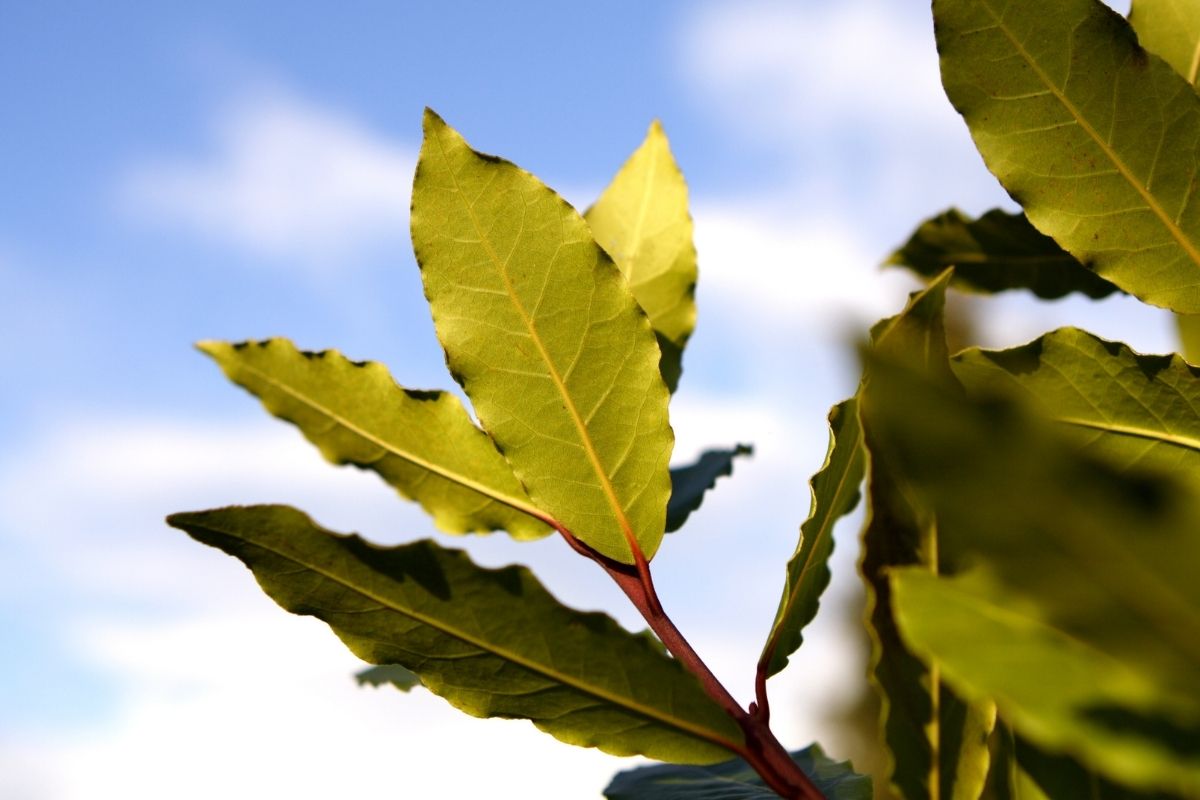Bay trees (bay laurel) are pretty common and show up in most gardens as ornamental plants.
It has dark green leaves that emit a sweet smell when crushed, which makes it an interesting addition to your garden or your kitchen.
They grow up to 3 to 30 feet tall, and the leaves can be used throughout their entire life cycle. You can grow bay laurel plants at home if you want your own supply of dried bay leaves for cooking.
Sweet bay trees should be planted in a well drained, compost-rich soil. If grown in a container, the trees may be kept at a smaller growth rate and brought indoors or to a sheltered location when cold temperatures threaten. Plant the trees at the same level as they were grown in their nursery pot. When planting bay trees, best timing is early spring when they are half dormant.

Where to get bay trees from
You will often find bay trees for sale at garden centers and frequently at supermarkets during the spring and summer months and most areas have stores that stock young bay plants.
Bay trees can also be found online all year round and Amazon is a good place to look – this one foot tall bay tree is typical of the offers that are available.
Getting started with a bay tree
Select a healthy tree that has dark green leaves. Bay trees with yellow or brown leaves are not as healthy, but a few of these should not prevent your plant from growing.
Dig a hole in a sunny location that is about three times the size of the root ball and remove all rocks and other debris. Pour 4 inches of organic compost into the bottom of the hole.
Sprinkle a handful of bone meal fertilizer into the hole and mix it into the soil well.
Plant the bay laurel tree so that 1/2 to 3/4 of the root ball is below ground level and the tree is situated in a U shape.
Pack soil around the roots using your hands, tamping it down to remove any air pockets.
Water the packed area very thoroughly until water runs out of the drainage holes on your pot or container.
Pour four inches of mulch over the planting area (i.e., one bucketful) and leave it there until spring when you can add more as needed based on how quickly yours disappears into your soil.
[amazon box=”B097DRHTL9″ template=”horizontal” title=”Live Bay Leaf Tree” description=” 4 to 5 inch tall, young bay tree. Ideal for indoor/home/outdoor growing”]
Growing conditions for bay trees
Bay laurel trees need sunlight to grow well, but they also do best where summers are cool.
Plant your tree in a location that is sheltered from wind exposure but still gets at least six hours of sunlight per day.
Water your bay laurel sparingly in the summer and deeply (so that water penetrates to the roots) every two weeks instead.
Water whenever the soil feels dry down, pouring slowly so that it does not wash away any of your mulch. Add mulch as needed between watering.
Care for your bay laurel tree
Pinch off dead leaves when you see them because they can spread disease or kill your plant if left on the ground next to healthy growth when they fall off naturally.
Fertilize every spring using an all-purpose fertilizer that is high in nitrogen.
Dose the soil at a rate of 1 tsp. per 1/2 square foot of soil surface (i.e., one cup for 50 square feet)–spread it evenly before adding water.
Dealing with pests on your bay tree
Treat scale insects, aphids and caterpillars if you see them on your leaves by wiping these pests away with rubbing alcohol on a cotton ball or swabbing them with insecticidal soap until they stop moving when applied to the leaves.
Repeat applications as needed over 10 days because many of these bugs are persistent once they have begun eating your plant material and laying eggs.
Treat fungal leaf spots by picking off affected leaves when dry and falling off on their own.
Examine your plant every fall for pests like borers, white grubs and other insects that can damage the roots or trunk.
Cut through the bark with a sterile knife until you see the insect, then remove it by hand using gloves to protect yourself from possible infection.
Remove any other damaged areas by cutting out the dead tissue to healthy growth, if needed.
Use pruning shears or a saw blade to follow any signs of rot in the woody branch material as close to the center of the problem as possible before removing it entirely from your bay laurel tree’s canopy.
Prune back all branches that look weak or unhealthy so they will not break in high winds.
[amazon box=”B08WH9BVKT” template=”horizontal”]
Harvesting your bay laurel tree
Pick leaves from the lower branches while you are watering.
Prepare leaves as soon as possible after harvesting them, because they will quickly start to brown on their own if they are not used right away.
Don’t take more than one third of the total number of leaves and don’t use all your bay leaves at one time, so that you do not kill your plant.
Store dried bay laurel leaves in an airtight container and keep them in a dry place out of direct sunlight to preserve their potency as long as possible.
Use the fresh leaves within 5 days if you don’t have access to a dehydrator or other method of drying.
Growing bay laurel from seed
Germinate the seeds by sowing them inside during winter, but take care not to damage the roots or leaves.
Plant out your bay laurel seedlings in their final growing location when they are between 6 and 12 inches tall.
Water until the soil becomes evenly moist, but not soggy. Keep the soil slightly damp throughout the first year of growth by watering every two weeks during summer and waiting until winter to water again (in temperate areas).
Fertilize your seedlings once a month each spring with an all-purpose fertilizer that is high in nitrogen to help them grow quickly.
Propagating bay laurel by layering
Take a branch with at least three nodes that is roughly pencil-sized and bury it in the soil. Keep the new plant area covered with mulch throughout spring so that it doesn’t get too dry.
Make sure there are still leaves on the branch when you uncover it to see if it rooted at all during the summer.
Remove and transplant your new bay laurel tree to its final growing location once a three-node cutting has rooted.
Growing bay laurel from cuttings
Take a stem cutting containing at least three nodes by removing the tip of an actively growing shoot.
Allow the cutting to dry in a warm, shady location for two days (in humid climates) or until it is completely calloused over before potting up in moist, all-purpose houseplant potting soil.
Water the cutting enough to keep the soil evenly moist throughout its time indoors for two weeks, then start watering every three days when you see new growth starting on the bay laurel tree.
Transplant your cuttings outdoors after they root and establish themselves in their final growing location during summer or early fall.
Final Words
Keep your bay laurel tree in bright, direct sunlight for around six hours per day.
Do not allow them to dry out completely or become soggy — you can tell if your bay laurel plants are getting enough water by digging down 6 inches into the soil and checking there.
You may need to transplant them occasionally as they grow, but you can avoid repotting if you plant them in well-draining soil that allows the roots to spread quickly.
Bay laurel trees are hardy but won’t survive a frost, they may also get destroyed by high winds in some areas.
Your bay laurel tree should produce fragrant, tasty leaves after around three years.
Harvest them by clipping off the top of each branch with scissors (do not snip into the main stem).
Pick more leaves as needed and always leave at least a third of your bay laurel tree’s foliage untouched to maintain its health.
You can use fresh or dried bay laurel leaves in almost any recipe that calls for the herb.




